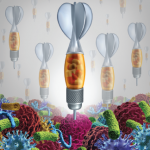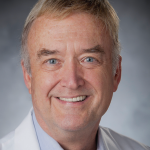As for patients, Dr. Smolen believes that a simple numerical score that integrates disease activity imparts a particularly meaningful benefit. CDAI scores can help patients track their own index of disease activity, much as diabetic patients usually want to know and track their HbA1c results.7
Incorporating routine assessments of disease activity in all RA patients at every clinical visit remains a challenge, concedes Dr. Aletaha, despite the ease of the CDAI and SDAI. “We are dealing with a complex disease and we should not say that it’s too difficult for us to assess patients at every visit. We should get national and international rheumatology societies, as well as funding agencies, to require structured and reliable assessments,” he says, “and Josef is doing a very good job indeed at crusading to get these policies adopted.”
Work Is Fun
Dr. Smolen is well known in rheumatology circles for promoting an informal and interactive tone with his research teams. He has an untiring dedication to collaboration and to fostering a professional environment that many have described as more play than work, says Dr. Aletaha.
Tellingly, Dr. Smolen uses the pronoun “we” instead of “I” when describing the accomplishments of his career. He speaks enthusiastically of his “terrific scientific collaboration with my many great co-workers at the university division over the years,” among them Dr. Aletaha; Martin Aringer, MD, of Klinikum Technical University in Dresden, Germany; Winfried Graninger, MD, of the Rheumatology Med Klink
in Graz, Austria; Hans Kiener, MD, of the University of Vienna; Klaus Machold, MD, of the University of Vienna; Kurt Redlich, MD, of the University of Vienna; Clemens Scheinecker, MD, of Hietzing Hospital; Georg Schett, MD, of Friedrich Alexander University Erlangen, Germany; Tanja Stamm, PhD, of the University of Vienna; and Gunter Steiner, PhD, of the University of Vienna. Likewise, his colleagues at Hietzing Hospital, spearheaded by his deputy Wolfgang Ebner, MD, “are an asset for our clinical research that occurs in close collaboration between the two departments,” he says.
In fact, Michael Mierau, MD, from the Hietzing Hospital department recently published an article on remission in practice, employing the CDAI and SDAI criteria. This and other clinical work is supported by the database (CARAbase) that has been developed in close collaboration between the two departments and is employed for every RA patient. “The clinical work is complemented by the translational research done in experimental models that today lie importantly in the hands of Kurt Redlich, Clemens Scheinecker, and Gunter Steiner,” adds Dr. Smolen. “The process of investigating outcomes—as much as the experimental animal work, basic scientific activities, and research into autoimmunity—has been a lot of fun for all of us.”
Tireless Ambassador
Dr. Smolen’s passion for building the programs in Vienna has been intertwined with advancing awareness of rheumatology within the European community. Dr. Lipsky points out that when Dr. Smolen was president of EULAR, he actively reached out to the European Union, championing the cause to recognize chronic diseases, including the rheumatic diseases, and to incorporate some of the EULAR focuses as targets for research.

